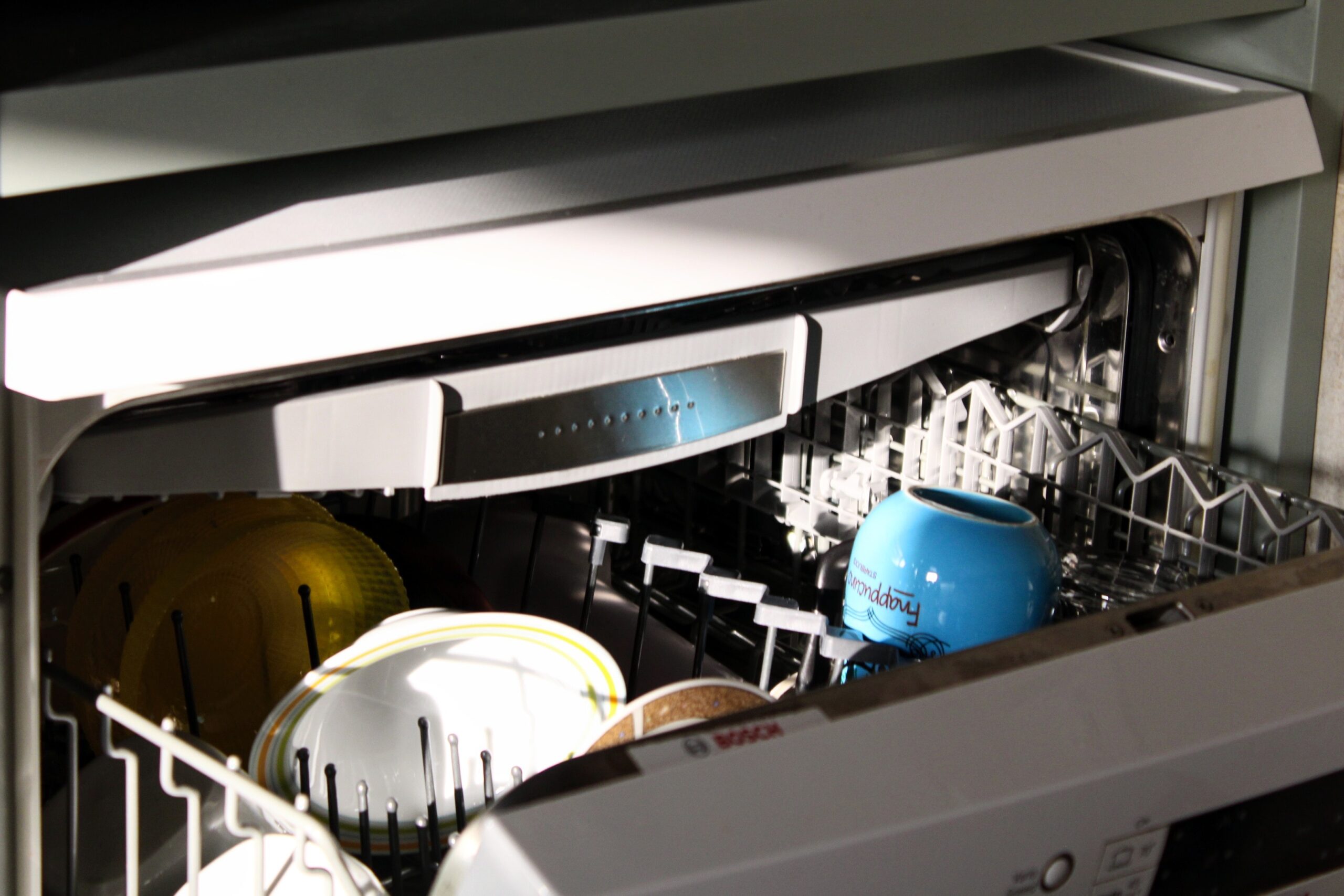Pooling water in the bottom of the dishwasher is not only unsightly, but it can also be dangerous.
Fortunately, most dishwasher repairs can be done at home with a little know-how.
This article will go over the most common causes of dishwasher leaks and help with solutions.
In summary, here are 7 common reasons why dishwasher leaks
- Filter is Clogged
- Check for worn-out or damaged gasket
- Leaky Dishwasher Door
- Leaky Dishwasher Tub
- Wrong Detergent
- Dishwasher not aligned
- Other technical issues
We are confident that we will be able to identify and resolve your dishwasher leaking problems.
In this article, we’ll help answer the most common dishwasher leaking problems.
Dishwasher Leaking: 7 Common Reasons (with fixes)
The most common reasons for dishwasher leaks are a damaged or worn seal, a clogged filter, a leaky door, and other related issues.
Based on our research and experience, below are the most common reasons why your dishwasher is leaking on the floor.
Ready, let’s jump in!
Is the Filter Clogged?
The first thing you should look for is a clogged dishwasher filter. If the filter is not cleaned regularly, there may be a build-up of food or foreign objects that not only prevents your dishes from being properly cleaned but also causes a leak.
If you notice that the cleaning performance has significantly decreased, it is a good indication that the dishwasher filter needs to be cleaned.
The filter is in charge of capturing food, debris, and other particles left over from cleaning.
So, clean out the filter, replace it and put it through a rinse, and check for leaks.
If you find there are no leaks, then that’s your problem is solved.
If it does leak move on to the next problem below
Worn or Damaged Door Seals
A common reason for dishwasher leaks is worn or damaged door seals (otherwise known as a gasket)
This is the rubber sealing on the door that prevents water from flowing out of your dishwasher.
So, take a close look at the door seal (otherwise known as a gasket) for any holes or rips.
If you find the rubber seal or gasket is damaged, this can be replaced with relative ease.
Soak your new gasket in warm soapy water, which will make it flexible and easier to install.
While you’re working on the door, go ahead and tighten the hinges if they’re loose.
If you find the door seal is okay, then move to the next item below.
Leaky Dishwasher Door
The next step is to figure out whether the source of the leak is your dishwasher’s door. Years of mechanical movement could have worn down or misaligned the door hinges.
If you discover that the dishwasher door’s hinges are misaligned, gently screw the screws back in with a screwdriver.
If you have found the dishwasher door to be okay, move to the next step below.
Faulty Spray Arm
Located on the interior floor of your dishwasher, the spray arm spins and sprays water onto the dishes during the wash and rinse cycles.
However, in an overcrowded or incorrectly loaded appliance, utensils and dishes may obstruct the arm’s rotation or cause it to become dislodged, even damaged after years of use, resulting in leaks.
To diagnose this, remove the lower dish rack from the dishwasher and spin the spray arm to see if it moves freely.
If not, remove any impediments such as fallen silverware or residue build-up.
Remove the spray arm by unscrewing it counterclockwise and inspecting it for damage such as cracks or blocked holes.
If you discover a crack or damage to the spray arm, the good news is that you can order a replacement from the manufacturer and replace the defective arm yourself.
If you haven’t already, unscrew the spray arm counterclockwise.
Then, align the center hub with the dishwasher floor opening and screw it in clockwise.
Reinstall the bottom dish rack after ensuring that it spins freely.
Wrong Detergent
Regular dish soap is not recommended because it foams excessively and can cause leaking.
Only use dishwasher detergents in dishwashers.
Even if you rinse your dishes with soap before loading them into the dishwasher, the solution on the dishes can bubble up and put pressure on the door seal, causing it to leak.
Avoid using dish soap when rinsing dishes to avoid this problem.
Other Technical Issues
Unplug your machine and turn off the power at the circuit breaker that controls the kitchen appliance before you begin tinkering with its electrical components.
Additionally, ensure that the water valve (located under the kitchen sink) is turned off.
Then, consult the user manual that came with your appliance or find a PDF copy of it online to determine which component of your leaking dishwasher is causing issues.
Alternatively, consult a qualified technician for professional advice.
Leaky Dishwasher Tub
If your dishwasher has seen its fair share of loads, a leak from a hole worn in the tub may have developed.
Detergents and minerals can corrode the tub’s bottom, allowing water to seep through and collect beneath your dishwasher.
Some tubs can be repaired but depending on the age of your dishwasher and the severity of the problem, you may need to replace it entirely.
Defective Pump
A dishwasher leak could be caused by a detective pump. It could also be a problem with the pump seal.
The pump circulates and drains the water in the dishwasher.
It can be found at the bottom of your dishwasher. It is divided into two sections, one for circulation and the other for drainage.
If, after an inspection, you discover that your drain pump has visible signs of damage or is constantly failing, it must be replaced.
Defective Valve
If your dishwasher is leaking because it has overflowed, the water inlet valve could be the source of the problem.
The water inlet valve allows water to enter the dishwasher from your home’s water line.
Water may leak from your dishwasher if this valve is defective or damaged.
In addition to a leak, this means your dishes may not be cleaned properly, so they must be operational.
Defective Hose Clamp
Hose clamps connect the dishwasher pump to the drain and circulating hoses.
If the clamps have become loose or the hoses have cracks in them, a leak may occur.
To gain access to these hoses and clamps, remove the kickplate at the bottom of the dishwasher.
Using a screwdriver, tighten the clamp. If this fails, the hose clamp must be replaced.
Examine the clamps on the drain and circulating hoses and refit or replace them as needed.
What should I do if my dishwasher continues to leak?
If you have gone through step by step and your dishwasher continues to leak suggest getting out a qualified professional to take a look.
Some manufacturer’s websites such as Samsung, LG, and Whirlpool have additional detail that may help diagnose leaking problems.
How can I tell if my dishwasher is dead?
Because you have a leak, it does not mean that your dishwasher is broken and cannot be repaired. Following the steps outlined above should allow you to identify and resolve the problem.
If your dishwasher is not draining properly or the motor is humming, it is time to replace it.
Conclusion
This brings us to the end of the article, and we hope your dishwasher is no longer leaking.
Remember that machines fail, and no matter how frustrating it is to discover that your beloved dishwasher is leaking, it is always best to maintain your cool.
If your leaking problem has not been resolved, it is best to contact a technician.

